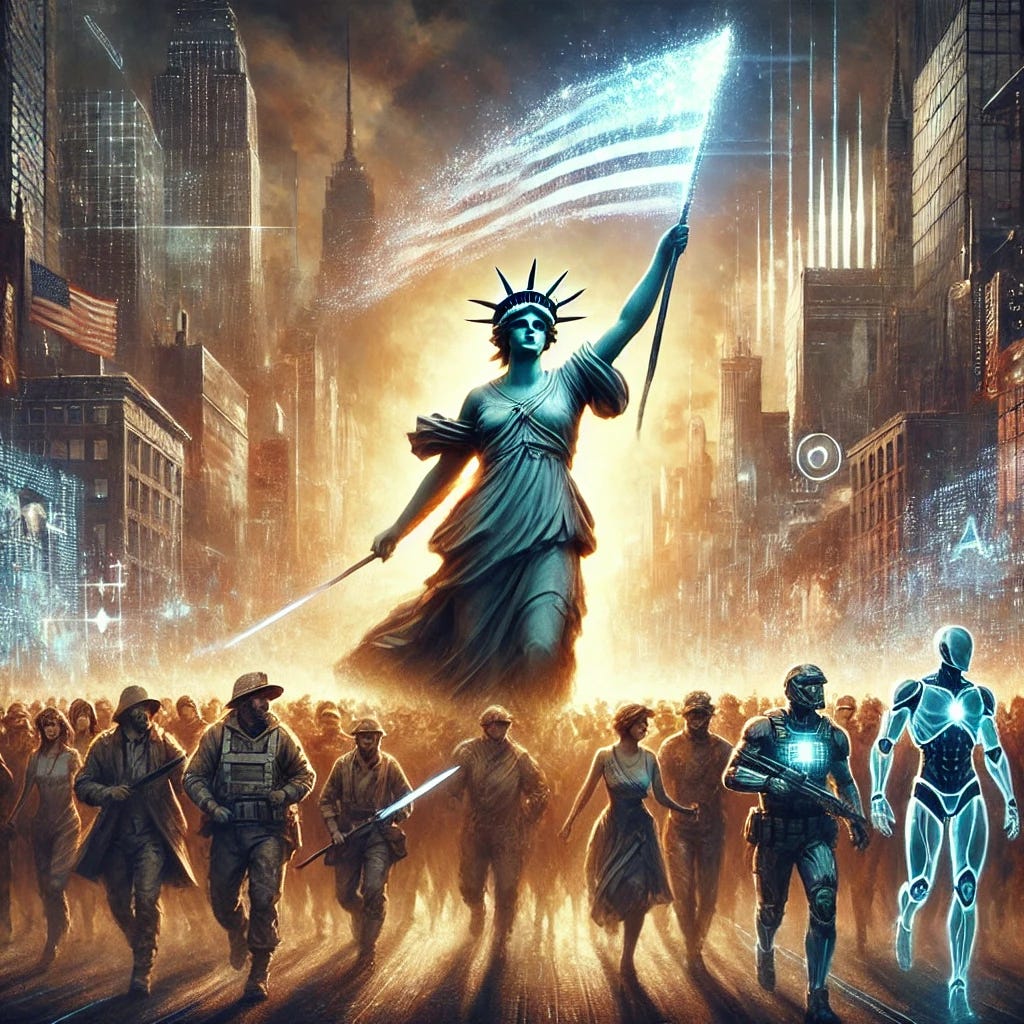
Hey there, art history buffs! If you’ve been with me since we finger-painted with cavemen, you know we’ve taken quite the journey. Now, buckle up for Day 5, where we oscillate between the orderly world of Neoclassicism and the storm-tossed seas of Romanticism.
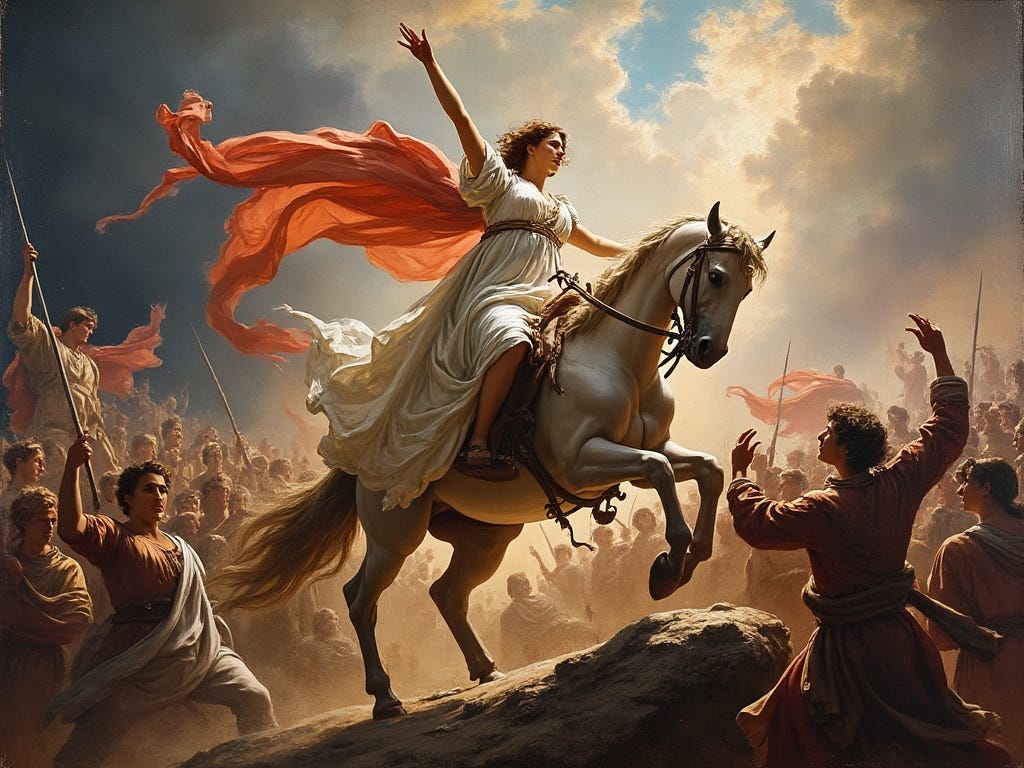
The When and What
This rollercoaster ride through time roughly spans from the mid-18th to the mid-19th century. Think less powdered wigs and more existential dread.
Neoclassicism: The Art World’s Reset Button
Neoclassicism was like hitting the refresh button on your browser after getting too many pop-ups from the Baroque and Rococo periods. It was all about:
- Clean lines: No more of that Rococo frippery!
- Moral narratives: Because every painting had to teach you something or at least make you look cultured at dinner parties.
Highlighted Artwork:
- “The Death of Socrates” by Jacques-Louis David — Here’s Socrates, teaching his last lesson before downing poison. It’s dramatic, it’s stoic, and it’s got everyone dressed like they’re in a toga party.
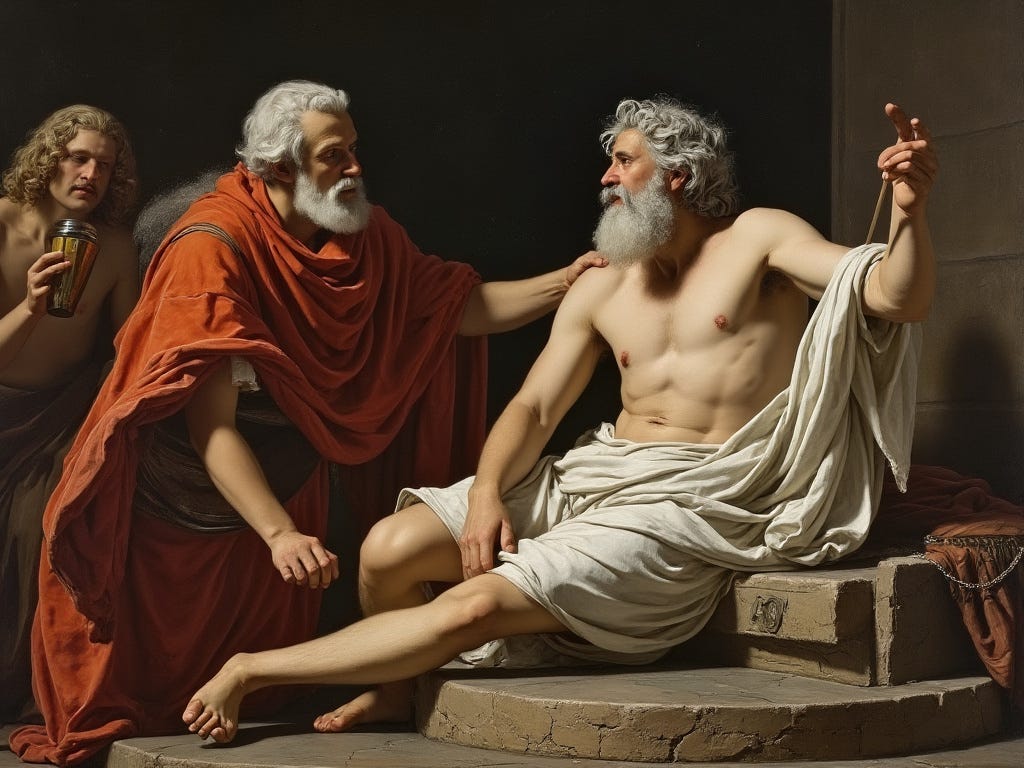
Romanticism: Let’s Get Emotional
Then came Romanticism, where artists decided feelings were the new black. This period was about:
- Emotion over reason: “I feel, therefore I paint.”
- Nature’s power: Because nothing says “I’m insignificant” like a tempestuous sea or a towering mountain.
Notable Emotional Outburst on Canvas:
- “The Raft of the Medusa” by Théodore Géricault — This isn’t just art; it’s a survival story with a side of despair, painted so vividly, you can almost smell the sea salt and desperation.
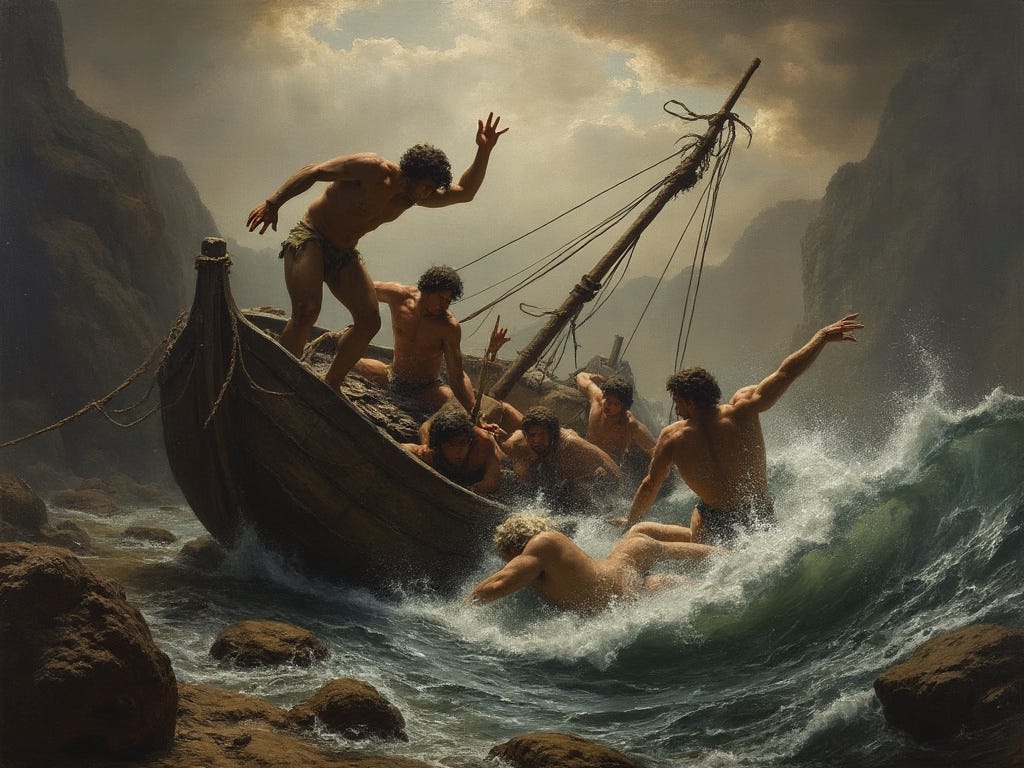
The Juicy Bits
Here’s where it gets fun:
- Rebellion in Brushstrokes: Artists in this era weren’t just painting; they were making statements. Liberty, equality, fraternity, or just a good old-fashioned “Look at how nature can mess you up!”
- The Gothic Revival: During Romanticism, there was this funky trend where people thought, “You know what’s cool? Medieval stuff.” So, they started building and painting like it was the new black… which was actually quite old black.
- Art for the Masses: Art started to become more accessible. No longer just for the elite, it began speaking to and for the common folk, telling stories of heroism, tragedy, and the beauty of the untamed world.
What’s So Cool About This Era?
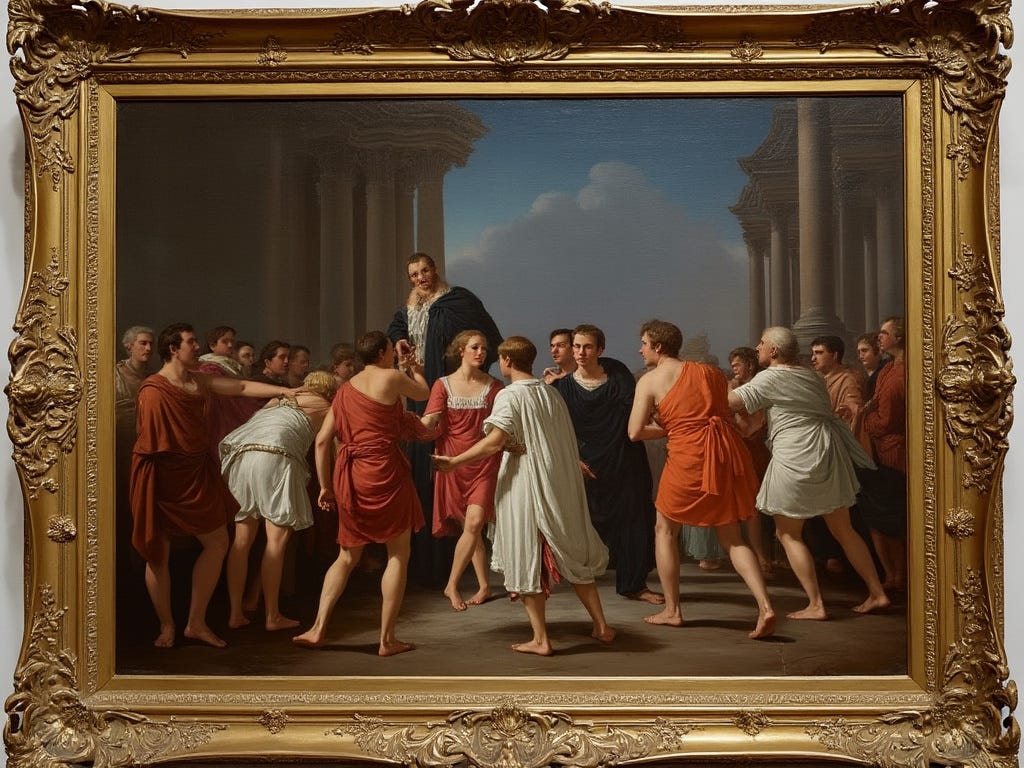
Well, it’s the drama, darling! Neoclassicism gave us art with a message, while Romanticism handed us art with a mood. Together, they bridge the gap between the structured past and the expressive future of art.
Over to You!
Got a favorite piece from this era that either inspires you to uphold justice or contemplate the vastness of nature? Or maybe you’ve got thoughts on why this period’s art still resonates today? Comment below, let’s share some art appreciation or even some art critique!
Stay tuned for Day 6, where we’ll dive into Realism and Impressionism. Spoiler: It’s where art gets real, then decides reality could use a bit of a blur.